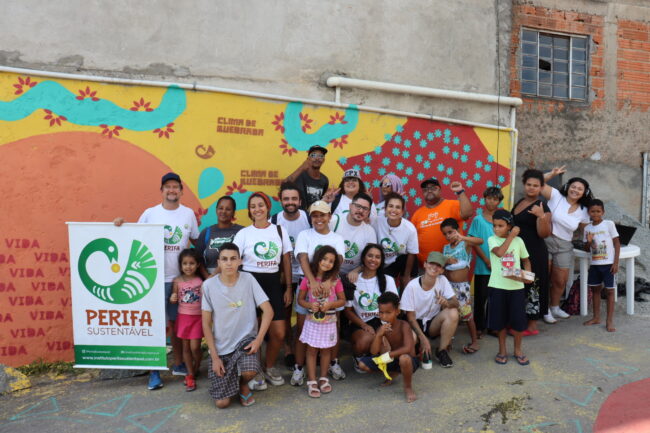 19.02.2024
19.02.2024
“Clima de Quebrada” takes action and fights environmental racism within schools
By Nádia Pontes
In the neighborhood near the Senador Teotônio Vilela State School, in Brasilândia, a suburb in the northern zone of São Paulo, an area previously neglected looks different. The accumulated trash is gone, the flowerbed has received seedlings, and the graffiti on the freshly painted wall carries the message of those behind the initiative: Clima de Quebrada.
The revitalization of the area is the visible part of an idea that was developed over two months within the school. The change came about through the efforts of students and teachers who were part of the first class of the Clima de Quebrada project, created by the Perifa Sustentável Institute.
“We created this initiative with the goal of educating for climate action in the periphery, combating environmental racism. And right from the start, our training project involved 200 students and 50 teachers,” celebrates Amanda Costa, founder of the Perifa Sustentável Institute.
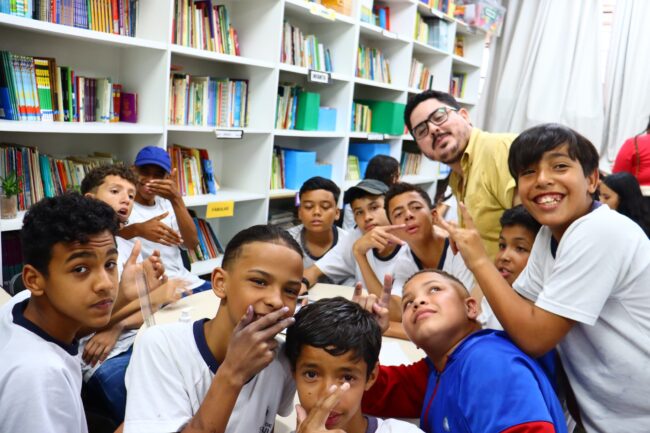
Action of the project in the classrooms of Senador Teotônio Vilela State School. Photo: Perifa Sustentável Archive
The initiative was one of the selected projects in the “Women Leading Climate Action” call, held by Casa Fund with the support of the GAGGA Alliance (Global Alliance for Green and Gender Action) and the Embassy of France in Brazil. The funds, donated directly to the grassroots organization born in Brasilândia, covered the hiring of local mobilizers and the tools used in the community action.
“This was our pilot project, successfully completed. For us to continue, we need more investments. The entire Perifa Sustentável team was voluntary,” says Amanda, who participated in the implementation of the initiative, coordinated by the institute’s director, Gabriela Santos, in the second semester of 2023.
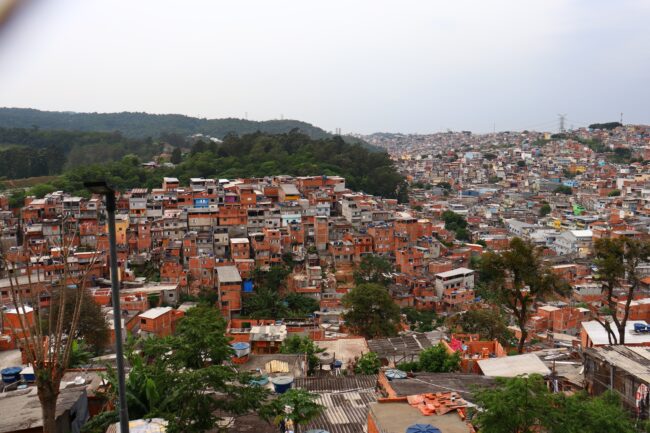
Brasilândia, where the project was carried out, also known as Vila Brasilândia, is a neighborhood belonging to the district of Brasilândia in the northern region of the municipality of São Paulo. Photo: Perifa Sustentável Archive.
In 2024, Clima de Quebrada remains active. At the end of January, the team visited the subprefecture of Brasilândia to demand awareness-raising actions in the neighborhood and proper garbage collection.
“We understand that the training provided by Clima de Quebrada and the community intervention we carried out need support from the state to generate even more powerful results,” the institute argues.
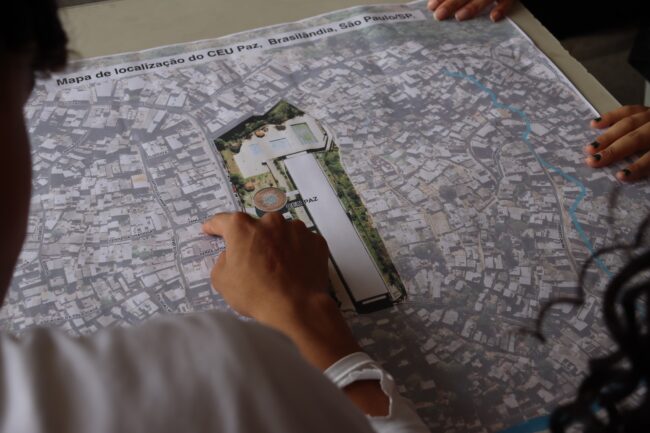
Photo: Perifa Sustentável Archive
Climate within the school
Faced with students aged 12 to 14, one of the first challenges faced by project monitors was addressing with the students the scientific concepts that explain the climate emergency. For many, the theory sounds distant, intangible, and not all teachers are prepared to address the topic in the classroom.
“We brought practical classes, with a lot of dynamics, exercises, we went out of the routine speaking in a light, adapted way for their language. In the end, they realized that the climate emergency is not something far away, but it affects their reality, who they are and who they could be, in relation to projects, work, health, housing,” explains Amanda.
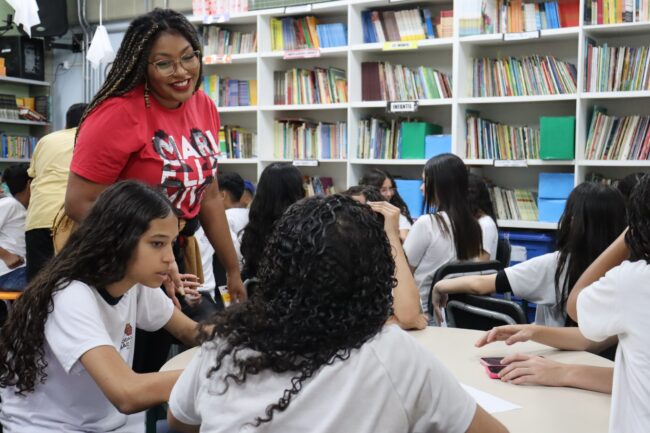
Mahryan Sampaio is Co-founder of Instituto Perifa Sustentável and Youth Ambassador for the UN in Brazil. Photo: Perifa Sustentável Archive
In Brazil as a whole, approximately 8.9 million people live in risk zones, mapped in 1,942 municipalities, according to a recent survey by the Civil House and the Ministry of Cities. In the city of São Paulo, the region of Brasilândia is identified as one of the areas with the highest incidence of risk, according to data from the municipality.
The first class of Clima de Quebrada was also trained to produce their own content on environmental issues and distribute it on social media. The videos produced by Perifa Sustentável that circulate on the internet are even used by teachers in the classroom.
“Many teachers watch our videos and ask us to bring Clima de Quebrada to their school,” says Amanda.
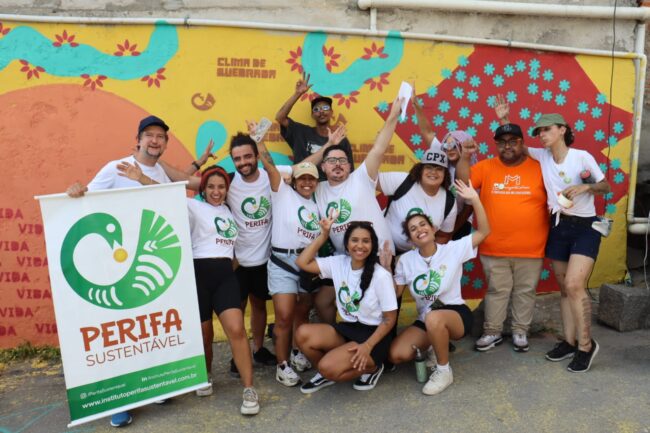
The graffiti on the freshly painted wall carries the message of who is behind the initiative: Clima de Quebrada. Photo: Perifa Sustentável
From the outskirts to Climate Conferences
Born and raised in Brasilândia, Amanda has been attentive to environmental imbalances since childhood. But it was during university that the global challenges affecting peripheral communities became clear to her.
“It was at university that I truly understood what social inequality is. My classmates were white and from upper-class backgrounds, so I realized that the way I lived wasn’t how everyone lived,” recalls the activist.
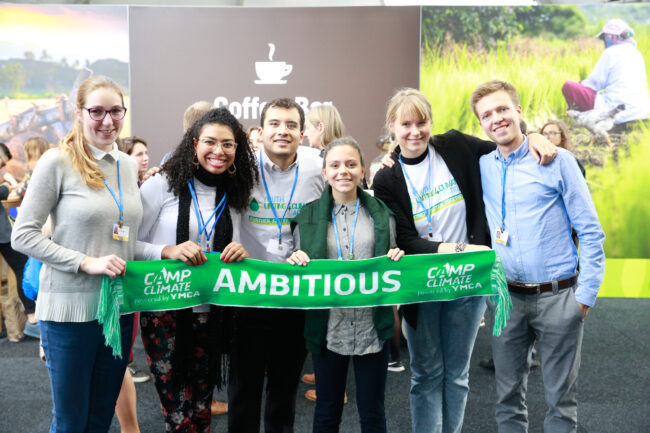
Amanda, co-founder of Perifa Sustentável, during her first participation in a Climate Conference (COP) in Bonn, Germany, in 2017. Photo: Perifa Sustentável Archive
The research conducted during college helped Amanda delve into multilateral agreements in the field of climate change. With her dedication to the topic, she won a scholarship to attend the Climate Conference (COP) in Bonn, Germany, in 2017. “It was another shock in terms of social, economic, and environmental inequality. I realized that the climate crisis had already reached the Global South and the population of the periphery, black people, women, were not represented in these negotiations,” she says.
Upon completing her degree in International Relations from Anhembi Morumbi University in 2019, Amanda sought to address this lack of representation. In that same year, she founded Perifa Sustentável, which became an organization in 2022.
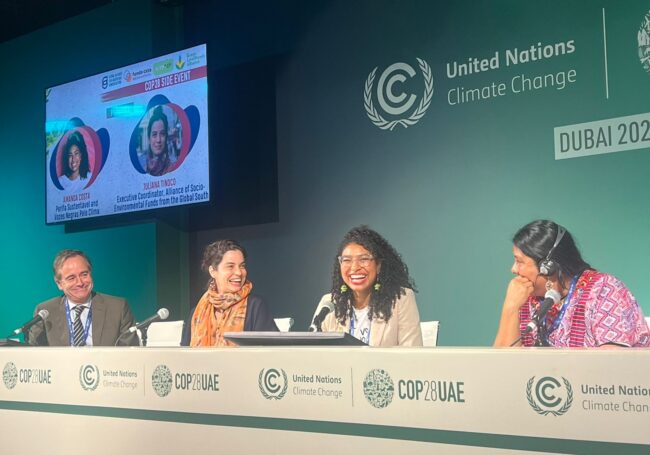
Amanda participated in panels and discussions at COP 28 in the United Arab Emirates in 2023. Photo: Perifa Sustentável Archive
Since then, she has participated in almost every COP. Gradually, those who are most affected by climate change have been accessing these spaces, but still without decision-making power, Amanda analyzes, who has made recent contributions to national policies to address the climate crisis.
From the last edition of COP in Dubai, she brought back frustration. “The urgency of our world is not reflected in international agreements. The strong oil lobby is very powerful. It brought back frustration, dissatisfaction, anxiety. We have a lot of work ahead, but now we need rest, breathing space, but we cannot stop,” she says.
